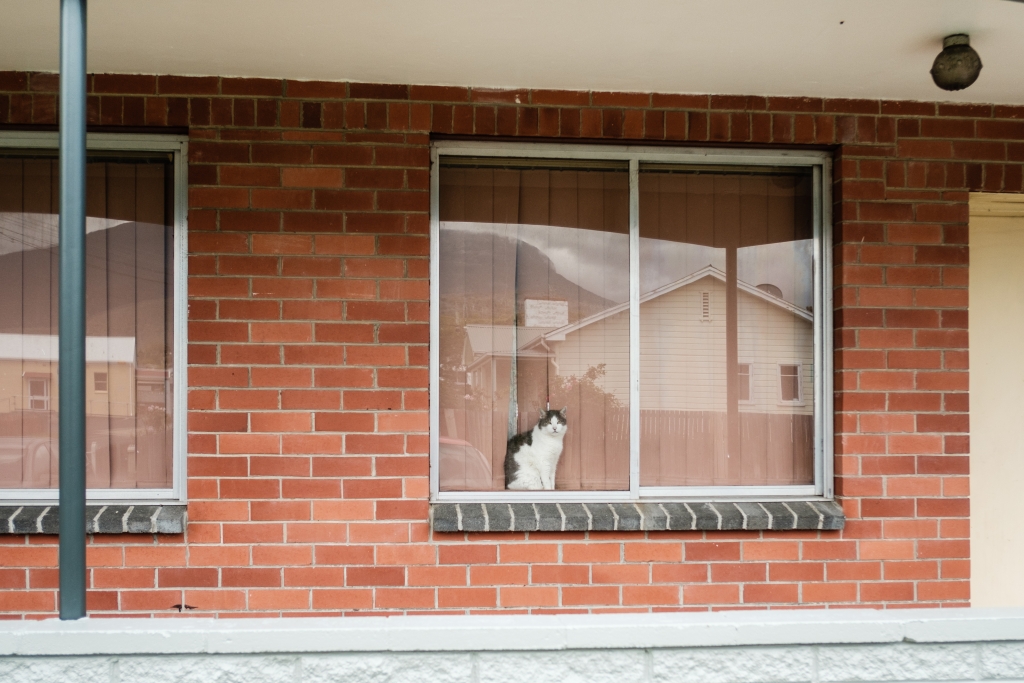How can we create homes for more Tasmanians?
May 22, 2017
By Lindsey Moffatt, Researcher, SARC
Ensuring access to an affordable home is the single most effective path to better outcomes in health, education, employment, and early childhood development in Tasmania.
Anglicare Tasmania’s Social Action and Research Centre (SARC) undertakes the Rental Affordability Snapshot each year to monitor affordability in the private rental market for low income Tasmanians. Spending more than 30% of a household’s income on rent is commonly used as an indicator of ‘housing stress’ for low income households.[i] Each year around the first weekend in April we work out whether people in 10 household types who depend on government income support payments could afford to find suitable accommodation for themselves and their families without putting themselves in ‘rental stress’. Additionally, we look at what properties were suitable if those same households spent between 31% and 49% of their income on their rent — a proportion of their income amount that would put them in rental stress. We also assess the situation for people in 4 household types who are working and earning the minimum wage.
Finding a home remains the most challenging for single adult households on Youth Allowance and Newstart
This year’s Rental Affordability Snapshot has once again shown us that it’s a challenge to find anything affordable in Tasmania’s private rental market for young people receiving Youth Allowance, and for single adults and single parents receiving Newstart; similar to previous years, there were no properties for single young people and 6 properties for single adults on Newstart to apply for across the state if spending up to 30% of their income on rent (see Table 1).
Single parents reliant on Newstart had a particularly tough time in the southern and northern, rental markets. There was nothing affordable except in the north west (see RAS Tasmania 2017 Summary, Figure 1).
Inadequate rates for Youth Allowance and Newstart in meeting Tasmanian’s basic living needs remains a stubborn barrier in helping the most vulnerable in our community to access a secure and affordable home.
Working families feeling the brunt of a tightening Tasmanian rental market
But this year, for low income working families, it’s become more of a challenge to find affordable homes in Tasmania’s southern and northern private rental markets. For example, for couple households where one adult is working for the minimum wage and the other adult receives Parenting Payment (partnered) to care for their children, there was a 3 and a 5 percentage point decline in the proportion of the southern and northern properties that were affordable to them. Similarly, for a single parent household with two children whose main income is the minimum wage, there was a 4 percentage point decline in the proportion of northern Tasmanian properties affordable and appropriate (see RAS Southern Tasmanian and Northern Tasmanian Summaries Fig 3).
So why is the Tasmanian rental market becoming unaffordable to more low income Tasmanians?
What’s happening to the Tasmanian rental market?
Increased competition for rental properties
Low income households are facing increasing competition for private rentals; from very low income households who cannot access social housing due to long wait lists; from moderate income households who are finding it harder to buy their first home; and from more affluent transient renters, such as fly-in fly-out workers, sea and tree changers, academics, health staff and international students. This competition makes it tougher for those with lower incomes to rise to the top of the pile in rental applications.
And this competition is being intensified by there being less properties coming into the Tasmanian rental market to choose from. There were 1,363 properties advertised for rent in Tasmania over the weekend of 1–2 April 2017. That’s 14% fewer rental properties compared to this time last year and around half the number of properties advertised over the snapshot weekend in April in 2013 (see RAS Tasmania 2017 Report, Fig. 1). This has particularly intensified competition in Tasmania’s southern and northern markets, with a 61% and 49% decline in rental stock respectively over the snapshot weekend in the last five years (see RAS Tasmania 2017 Report, Fig. 1).
We don’t know why this decline is happening, but it could possibly be affected by there being a smaller turnover in rental properties; tenants looking to be long term private renters who find a home that suits them are likely to hold onto them, given current market conditions, and tenants who would otherwise be looking to move on — either into social housing, or into the home purchasing market — are unable to do so for the aforementioned reasons.
But the declining rental stock may also be driven by demands from the burgeoning tourist economy for short term rentals, facilitated through platforms, such as Airbnb. Going forward, we need to better understand the impacts that short term accommodation provision, such as through Air BnB, is having on Tasmania’s private rental market, to ensure that Tasmania’s crucial economic driver, tourism, can thrive and Tasmania can continue to offer enough affordable homes for it’s growing and changing population.
Increased rental prices
We also know that the declining number of rental properties are becoming less affordable to low income households. For rentals where the bond is administered by the Rental Deposit Authority, Tasmania’s median rental prices increased by 2.8% over the year to March 2017; 6.6% and 5.1% increases in the south and north of the state, with 9 to 12% increases for one bedroom rentals in those regions. This may be driven both by increased competition for properties and by a change in the types of rental properties being offered, from unfurnished longer term properties to the more profitable furnished and transient rental market.
Whatever the reasons, these rental increases are considerably more than year on year increases in the minimum wage (2.4%), or than the rate of Newstart, which has not been increased in real terms since 1994. Such rental price increases mean that the only affordable areas for low income Tasmanians are likely to be outside of major centres, which may be away from their family and friends, further from employment opportunities, cost more in transport to get to their own or their kids’ education and existing healthcare providers. The other alternative is for families to go into extreme rental stress. And, we know that for low income households, paying half of their income or more on rent means either rent being a constant struggle, or making sacrifices elsewhere: in what you eat, in heating your home, in access to healthcare, in the activities and opportunities your children can engage in.
Anglicare regularly sees and supports families, such as Bradon and Kylie in the case studies below, through the impacts of these difficult choices.
Bradon, a 21 year old man who receives Youth Allowance. He is staying with different family members for a couple of months at a time. He’s been offered a job trial in a rural location but he has no family members to stay with nearby, and he doesn’t drive. Unless the job works out he can’t afford to take on a rental, and there is no short-term accommodation nearby that housing providers can set him up in. So it’s a Catch-22 — he can’t take the job trial without accommodation, but can’t secure accommodation without income from a job. Youth Allowance is not enough to pay for private rental accommodation. The situation is having an effect on his mental health as he blames himself for not being able to resolve the situation.
Kylie is a mother with three kids and is in the Rapid Rehousing program (due to family violence). The landlord is very happy with her and her kids have settled into the local school and sporting clubs. Six months in to her 12 month lease (the length permitted under the RR program) Anglicare Tasmania is helping her look for rental accommodation. There are no affordable properties in the area she currently lives; so far the only affordable rentals are in the suburb where the family violence perpetrator lives. Not only does this put her in danger, it would also mean uprooting the children from their current school or incurring additional transport costs to keep them in their current school and sports clubs. At each property she attends she is competing against 30–40 other prospective tenants. She has been told not to take her children to the inspections and to treat the inspection like a job interview, to maximise her chance of securing the tenancy. Kylie doesn’t have references for previous rental accommodation because her husband’s name had been on previous leases. She does not want to have to disclose the family violence in order to explain why she doesn’t have these references, both to protect her and her children’s privacy, but also out of concern that this will affect her chance of securing a tenancy.
How can we create more homes for low income Tasmanians?
Providing affordable housing for all Tasmanians is a complex issue to address. There is a clear need to raise the rates of government support for low income households to ensure payments realistically and reasonably meet the costs of living.
Beyond this, relieving current competition within the Tasmanian private rental market requires consideration of a range of strategic federal and state government initiatives that would increase access to affordable housing stock across all three housing sectors — social housing, private sector rentals and house purchasing. This is not easy to achieve, but is likely to need a range of intiatives including:
A national strategy to drive affordable housing and a clear state plan for the expansion of land use, including housing development. Such a vision would drive more affordable housing as a long term agenda, through inclusionary zoning and land use and development criteria that would increase the amount of affordable stock across all three housing sectors. It could also provide the ‘blueprint’ into which Tasmania’s Affordable Housing Strategy’s initiatives could be enabled.
Incentives that stimulate the development of more affordable housing for rent and purchase, for example through federal and state government policy levers across taxation and funding, such as impact fees for developments that remove properties from the rental market, incentives for private developers and investors to invest in appropriate development that meets the needs of a range of low income households, and bond aggregators that boost finance available to entities to build social housing.
Incentives that enable more households currently in rental accommodation to transfer to home ownership, including within the social housing sector. There is, of course, a danger such schemes can inflate house prices. Policy levers need to be designed in conjunction with other initiatives which may prevent or minimise that risk.
Incentives that encourage landlords to embrace low income households as tenants, such as government-funded risk management initiatives and broader encouragement of landlord insurance to minimise landlords’ perceived ‘risks’ associated with having low income tenants.
[i] Housing stress describes a household in the lowest 40% of Australia’s household income that spends more than 30% of its income on rent or mortgage payments. ‘Extreme rental stress’ is defined as spending at least 50% of a household’s income on rent. See Yates 2007, Housing Affordability and Financial Stress, NRV3 Research Paper 6, AHURI, Melbourne. Cited in Rowley, S & Ong, R 2012, Household Wellbeing in Australia, AHURI Final Report №192.

